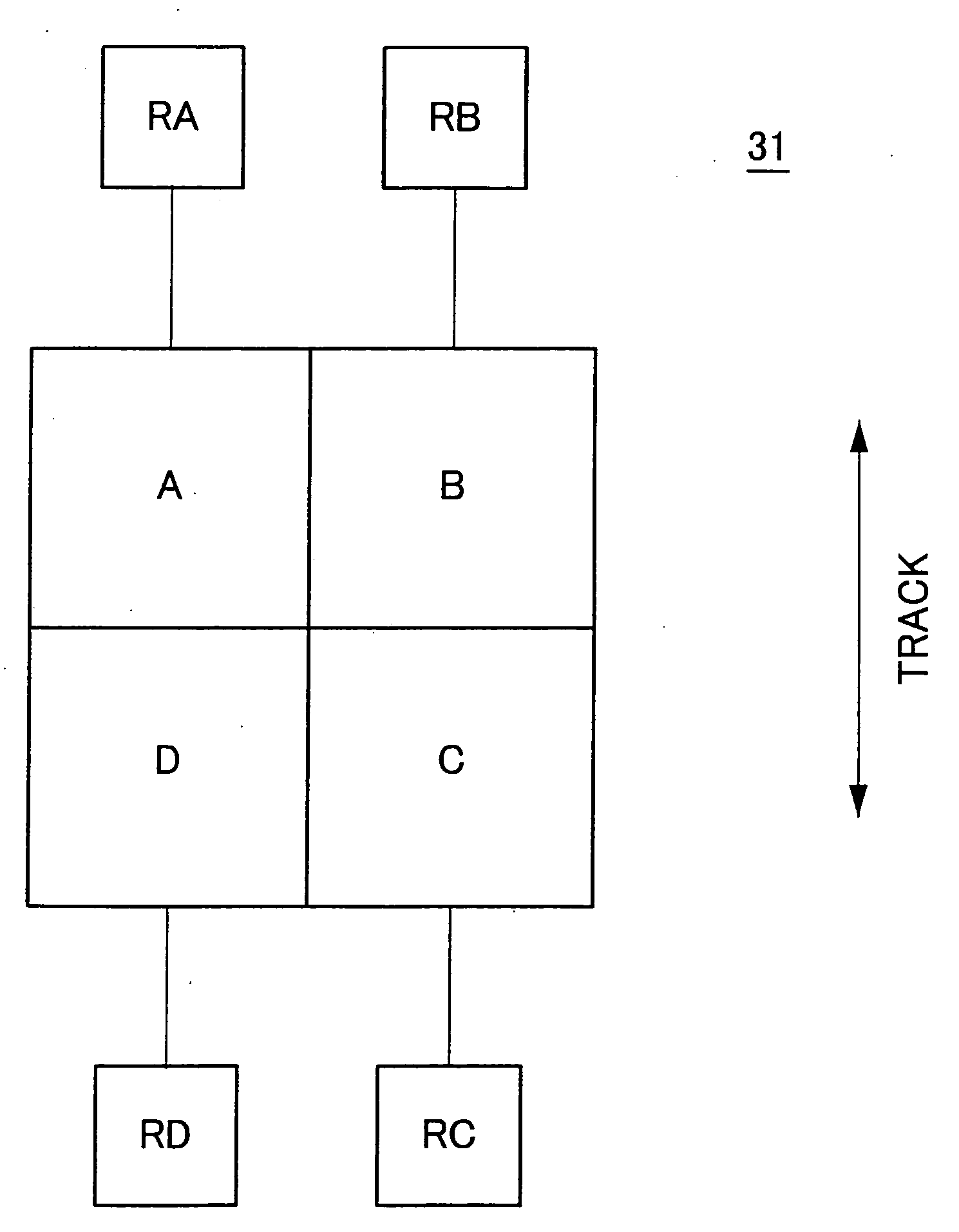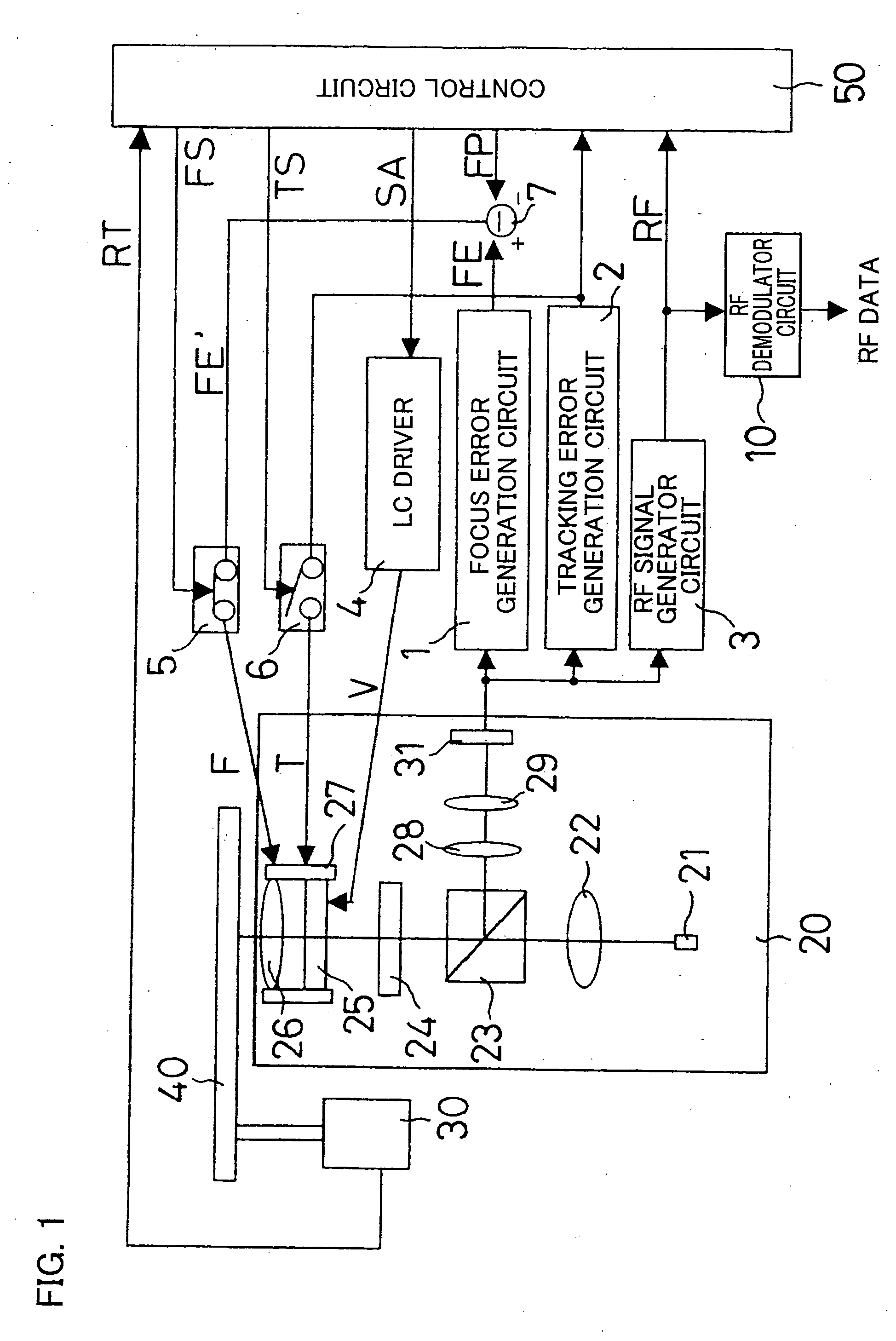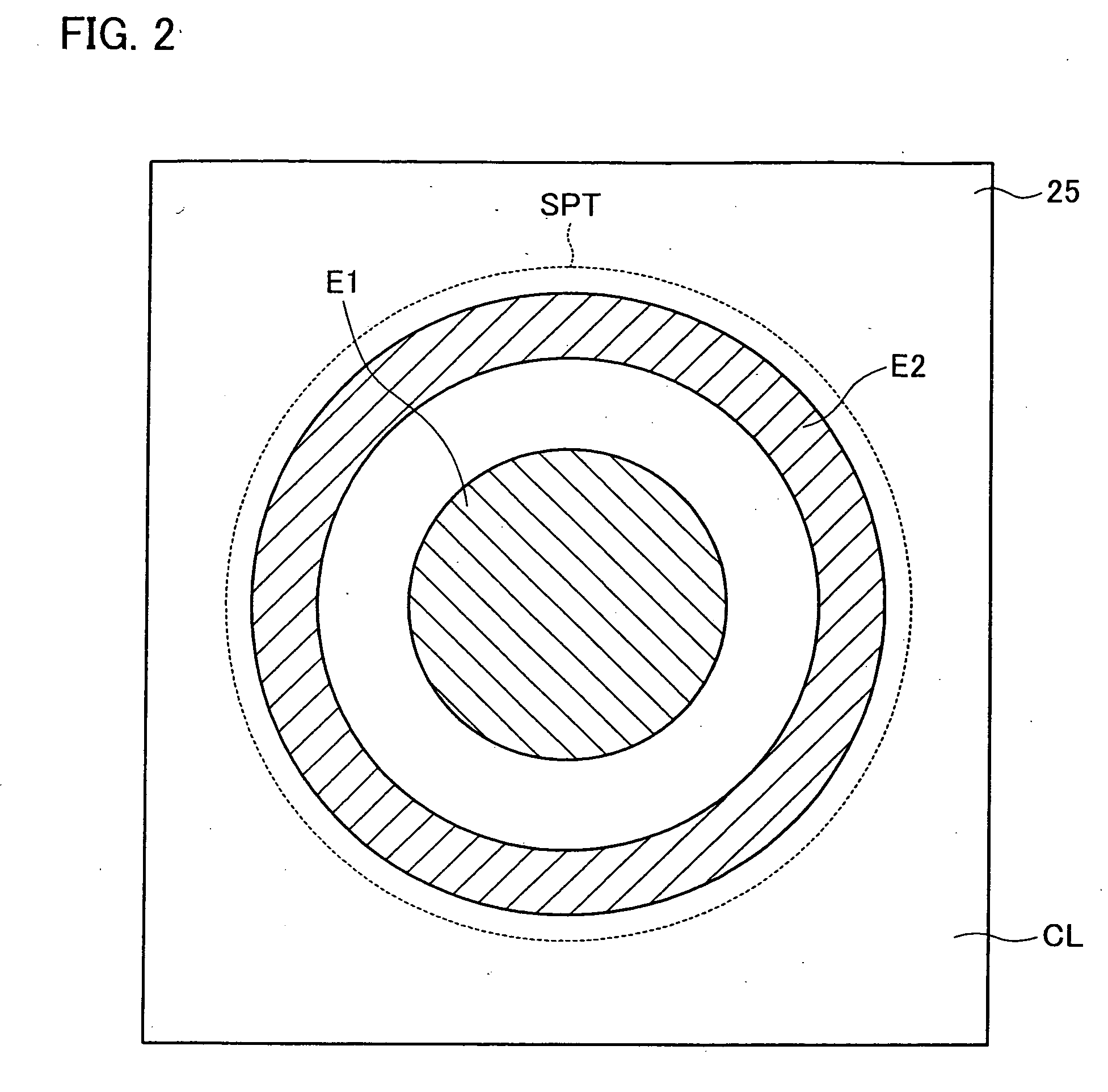Optical pickup spherical aberration compensating method, optical pickup sherical aberration focus offset compensating method, and optical pickup device
- Summary
- Abstract
- Description
- Claims
- Application Information
AI Technical Summary
Benefits of technology
Problems solved by technology
Method used
Image
Examples
embodiment 1
[0084]FIG. 1 depicts the construction of an optical pickup which is the first embodiment of the present invention. In FIG. 1, a pickup 20 emits a read beam onto an optical disc 40 as an optical storage medium which rotates as driven by a spindle motor 30, and receives a reflection from the disc 40. In the driving, for every revolution of the optical disc 40, the spindle motor 30 generates a revolution signal RT for output to a control circuit 50. After shining a read beam onto the optical disc 40 and receiving its reflection, the pickup 20 converts that incoming light to an electric signal for output to a focus error generation circuit 1, a tracking error generation circuit 2, and a RF signal generator circuit 3.
[0085] The pickup 20 contains a laser producing element 21, a collimating lens 22, a beam splitter 23, a quarter-wave plate 24, a liquid crystal panel 25, an objective lens 26, a focusing tracking actuator 27, a collective lens 28, a cylindrical lens 29, and an optical sens...
embodiment 2
[0111] The following will describe the second embodiment of the present invention in detail with reference to figures. FIG. 6 illustrates the construction of an optical pickup which is the second embodiment of the present invention. In FIG. 6, a pickup 20 emits a read beam onto an optical disc 40 as an optical storage medium which rotates as driven by a spindle motor 30, and receives a reflection from the disc 40. In the driving, for every revolution of the optical disc 40, the spindle motor 30 generates a revolution signal RT for output to a control circuit 50. After shining a read beam onto the optical disc 40 and receiving its reflection, the pickup 20 converts that incoming light to an electric signal for output to a focus error generation circuit 1, a tracking error generation circuit 2, and a RF signal generator circuit 3.
[0112] The pickup 20 contains a laser producing element 21, a collimating lens 22, a beam splitter 23, a quarter-wave plate 24, a beam expander 35, a beam e...
embodiment 3
[0147] Next, a third embodiment of the present invention will be described in detail in reference to figures.
[0148]FIG. 12 shows the RF level changing with changes of the lens distance of a beam expander 35 in spherical aberration correction. The beam expander 35 here is in an optical pickup of the present embodiment which is arranged similarly to the FIG. 6 embodiment. The optical pickup has a spherical aberration left uncorrected (first spherical aberration). In FIG. 12, similarly to FIG. 7, the spherical aberration of the device is plotted on the horizontal axis, and the RF level of an information signal is plotted on the vertical axis. The RF level is a maximum at zero spherical aberration. The RF level hardly changes at aberrations equal to or less than a reference value for optical characteristics evaluation. Well-known reference values for evaluation are, as mentioned earlier, the Rayleigh limit (defining a maximum value of wavefront aberration at λ / 4 or less) and SD (Strehl...
PUM
 Login to View More
Login to View More Abstract
Description
Claims
Application Information
 Login to View More
Login to View More - R&D
- Intellectual Property
- Life Sciences
- Materials
- Tech Scout
- Unparalleled Data Quality
- Higher Quality Content
- 60% Fewer Hallucinations
Browse by: Latest US Patents, China's latest patents, Technical Efficacy Thesaurus, Application Domain, Technology Topic, Popular Technical Reports.
© 2025 PatSnap. All rights reserved.Legal|Privacy policy|Modern Slavery Act Transparency Statement|Sitemap|About US| Contact US: help@patsnap.com



